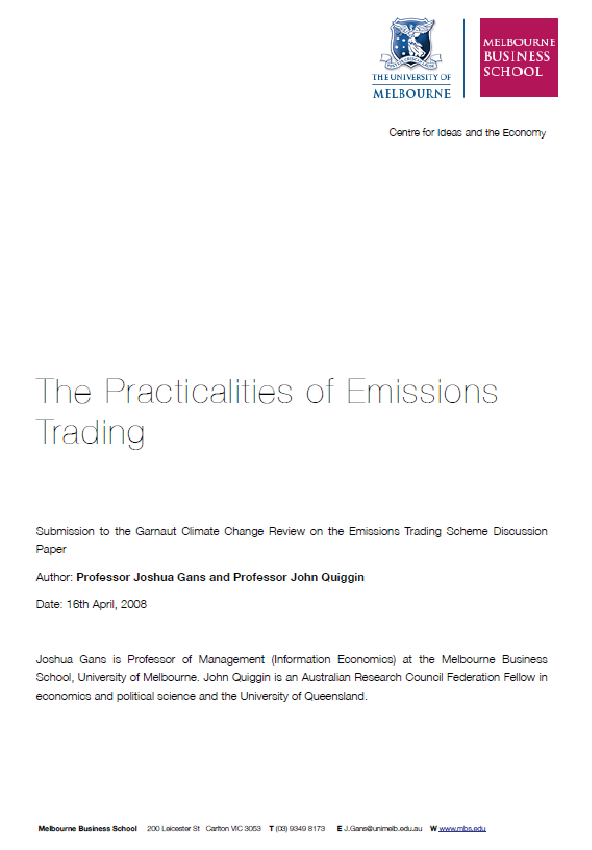Dear Aubrey,
I support the principle of C&C and am happy to endorse your proposal on that basis.
Best wishes John Quiggin

John Charles Quiggin is an Australian economist, a Professor and an Australian Research Council Federation Fellow at the University of Queensland, and a member of the Board of the Climate Change Authority of the Australian Government.

Contraction, convergence, compensation
Until recently, much discussion of longer-term international agreements on climate change mitigation has implicitly assumed that historical starting points such as 1990 will continue indefinitely to play a role in the setting of emissions targets. Broadly speaking, the assumption has been that countries with high 1990 emissions levels will accept cuts relative to those levels. On the other hand, countries with low 1990 emissions levels will accept constraints that allow some growth relative to their existing emissions but not enough to equal emissions from historical high emitters.
The growth of China (and some other fast-growing developing countries) since the negotiation of the Kyoto protocol in 1997, along with new evidence on the sensitivity of global systems to climate change, has rendered these assumptions collectively untenable. China has already surpassed, or will soon surpass, emissions levels consistent with a CO2 equivalent concentrations target of 450 ppm or 550 ppm. It follows that any sustainable post-Kyoto agreement must eventually require cuts in Chinese emissions. It is obviously unreasonable to expect China to cut emissions when it is still far below levels prevailing in developed countries unless the principle of permanent differentiation on the basis of historical emissions is abandoned.
That is, the only reasonable basis for proposing cuts in existing emissions from China and other fast-growing developing countries is an agreement on eventual (say by 2050) convergence on a common emissions level.
One concern that has been raised is that an emissions right expressed on a per person basis will encourage countries to increase their population. Analytically, this is only correct for countries with current and projected emissions well below the common target, since otherwise an increase in population only increases the cost of reducing emissions. On the other hand, it is precisely for these countries that small economic incentives might make a substantial difference to population growth.
Within climate change negotiations, it might be possible to negate these concerns by making emissions rights proportional to, say, UN medium population projections, rather than actual population in 2050. This would have the benefit of specifying an actual emissions target.
A ‘contraction and convergence’ approach still implies substantial differences in favour of historical high-emitters between now and 2050. This has raised the question of compensation. However, it seems more appropriate to focus on notions of bargained consensus. What is required from developed countries is sufficient encouragement, including technology transfers and expansion of the Clean Development Mechanism, to make participation in a contraction and convergence agreement an optimal choice for developed countries. In practice, it is likely that the agreement of a few large countries (China, India, Brazil) will make holding out by smaller developing countries an unattractive option.
The Practicalities of Emissions Trading Submission to the Garnaut Climate Change Review on the Emissions Trading Scheme Discussion Paper Author: Professor Joshua Gans and Professor John Quiggin Date: 16th April, 2008 Joshua Gans is Professor of Management (Information Economics) at the Melbourne Business School, University of Melbourne. John Quiggin is an Australian Research Council Federation Fellow in economics and political science and the University of Queensland. |